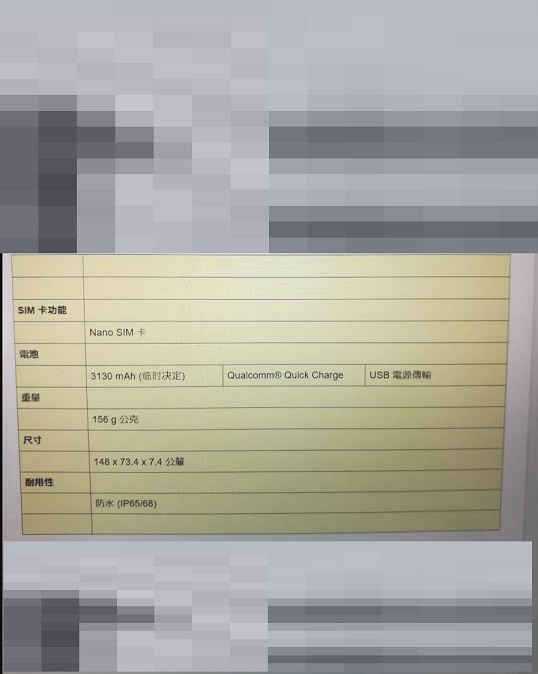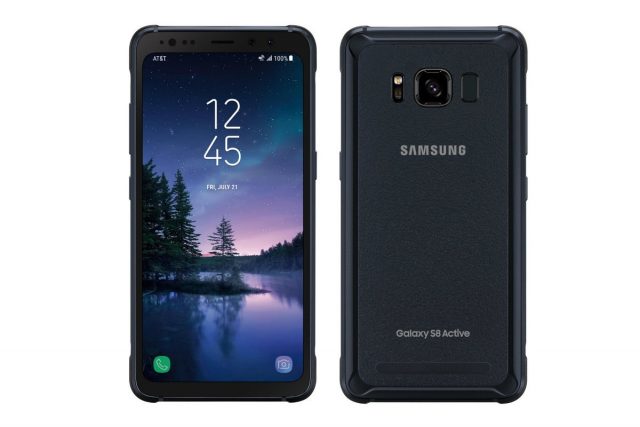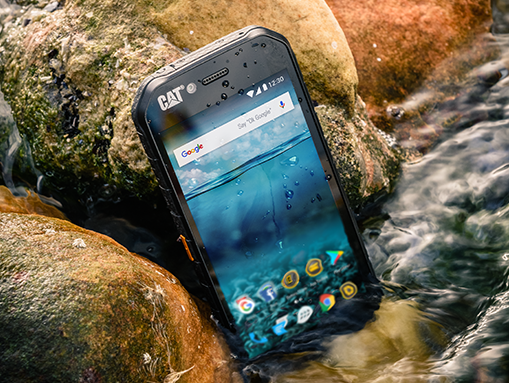Almost everyone you know has one, and most of us find it difficult to go through our day without one. Mobile devices are an integral part of our lives, and the market is flooding with more of these products than one can imagine. Every year manufacturers go to great lengths to bring us the latest and greatest from their brightest engineers. At the higher-end of the scale sits the much-coveted flagship smartphone. The competition between tech companies to deliver a truly innovative product couldn't be more intense. New features are added, while some fall by the wayside in attempts to innovate.
But are these smartphone manufacturers getting it right, or are they missing the mark on a significant market segment that is saturated with shorter product life-cycles?
Let us face it; mobile customers can be a tough crowd to please because of our high expectations in what a flagship product should be.
We'll take a look at what smartphone users want, the features that we care about, and the factors to consider when investing.
What Do Smartphone Users Want?

Remember those days when Nokia dominated the landscape? I bought my first cell phone from this company, and I thought the world of it at that time. That low-res screen, a brick of a body shell, and that tiny keypad are what did it for me back in 2004.
Well, that's not the case anymore, as we've gone far past those days.
Screen
One of the essential things smartphone users want is a high-resolution screen with excellent color reproduction.
Afterall this is the part of the device we spend the most amount of time interacting with.
Back in 2013, LG announced the first Quad HD AH-IPS LCD panel for smartphones.
When they launched the G3, it was a sight to behold, and an indicator of what the future holds about mobile displays.
Fast forward several years, and it's easy to see the upward trend. But along with super high-res displays, the demand for shrinking bezels is increasing.
In short, customers want more screen real-estate in a manageable body.
Larger screens are here to stay and are what most people want in a flagship smartphone.
We don't want an unwieldy device for the sake of a big screen, that's too much of a compromise, and that's why smaller bezels are important.
Internal components can sometimes get in the way. Elements such as the front-facing camera and light sensors make it a challenge for manufacturers to cram all that technology into a device.
Flagship smartphones are not cheap by any means. The price of admission can equal 3 or 4 months worth of groceries depending on the size of a household. As a result, customers are holding these devices to a high standard, and expect only the best.
High-definition displays with high pixel counts are an important factor when making our purchasing decisions.
We want to feel a sense of being at the forefront of display technology.
But pushing the boundaries of accurate color reproduction, and incredible visuals is only a nexus within the broader picture. Other important aspects are needed.
The quality of the display is a critical factor in making a great flagship mobile phone. In producing a stunning visual experience comes at the cost of battery life.
Power hungry displays need a battery that can last more than just a day.
Battery
This is a constant Achilles Heel for a lot of devices. The introduction of quick or rapid charging is more of a band-aid solution for a lingering problem which hasn't been solved.
We are more connected today than ever before. Information is readily available at the press of an icon.
As we consume more, the demand for battery stamina will always be there.
With millions devoted to R&D, it's a wonder why smartphone manufacturers cant safely introduce a battery that will last two days with heavy usage on a single charge.
We've seen companies in the past try to push the capacity limits of a battery, but only to fail.
Most customers can't appreciate the complexity of safely developing a relatively high-capacity battery that can handle the heat generated by quick charging. Afterall, these devices rely on passive cooling, and there are limits to how far researchers can go.
Camera
For a lot of users, this area is a deal-breaker, and tech companies know it.
The best camera is the one that you have at the moment during a special event.
We are seeing more devices allowing for manual control of the aperture, shutter speed, and ISO for taking better pictures and videos.
Higher megapixels don't always determine the quality of a camera, and more consumers are catching on to that fact.
Optical Image Stabilization(IOS) and better sensors are some of the features smartphone users care about.
Recording in 4k is particularly crucial for those of us that tend to capture everything through video.
Who wants to see breaking footage uploaded to YouTube in hard to see and hear video? Absolutely nobody does, that's why companies such as Samsung, Apple, LG, and Google are pushing the envelope on camera quality.
A terrible camera can sink the perceived value of a device very quickly.
Word of mouth travels quicker and further than any marketing campaign ever will.
We can deal with battery thing more than a shitty camera any day of the week.
Storage
For a flagship device, base storage options are vital. 32GB is the new 16GB, and that's barely enough for a small percentage of users.
Having options for cloud storage is a convenient option, but in reality, we all want our media in one central place.
With faster wireless speeds on the horizon, the potential to consume and share media on a higher scale is a reality.
Support for expandable storage is a massive bonus for Android phones.
It's easy to add more on the fly, and with the SD card prices falling, grabbing a 128GB card isn't all that expensive anymore.
Software
The choices in this segment are limited. You either stand on the side of iOS or Android.
These two operating systems command the lions share of the market, and as a result, they garner the most attention.
We are not going to debate which one is better because, at the end of the day, users will buy the OS that suits their needs the best.
At the crux of it all, security and reliability are paramount, especially in today's digital world.
It's disheartening to hear when an issue or flaw is discovered that may cause an attacker to compromise a system.
If users are running iOS or Pixel branded devices, these exploits are usually found out about and dealt with, through critical updates rather quickly.
Because of the fragmented nature of Android devices, timely updates just aren't timely at all.
If we invest our money into a product say from HTC, Samsung, LG, or Xiaomi, we want to know that these manufacturers are devoted to supporting their skinned version of Android for years to come.
It gives users the confidence to dive into a brand and stay with it for the long-term.
In short, a mobile operating software should be smooth and intuitive.
Jumping through many swipes and gestures for the most straightforward tasks are a complete turn off, and do little in pleasing users.
The software experience must be of convenience and shouldn't get in the way of using a device.
Factors such as processing power and RAM play an important role in delivering a smooth experience.
Some users want the ability to map a button to an action.
These actions can include things such as
Opening the camera Recording audio Launching a browser Restarting the device Launch a playlist Then, there are those that want everything about an OS in a simplified form.
The point is that we all want options. Having to choose between two features isn't a choice it's more like an ultimatum.
Three or more features feels like we are getting somewhere.
Having an extensive app ecosystem sounds excellent on paper, but in truth, the majority of users only use a handful of apps.
More of us wan restrictions on what data these mobile apps are collecting.
Why does a simple notepad app need access to the camera, microphone and photo gallery to deliver the full experience?
This shouldn't be the case in many situations and is an annoyance.
Design

Great design and build quality can be added to the top of the list for many smartphone customers.
When we spend several hundred dollars on a premium device, we expect nothing but the best in design quality, and thankfully many manufacturers agree.
A flagship device should not only look incredible, but it must also be durable.
Water and dust-proofing should also be standard on these high-end devices.
Sure, it's easy to buy a protective case, and in most situations, consumers tend to do just that.
But covering your device for the sake of protection hides the beauty of your smartphone.
It's both a pro and con when owning these devices. There are those who either go for a skinned approach or opt for no protection.
As we progress forward, more devices are built with sturdier materials and more thoughtfulness about quality.
Warranty programs are a great benefit, but when taking into account the premium price for flagships, this represents an additional cost to an already pricey investment.
Factors To Consider When Buying A Flagship Smartphone

Buying a premium mobile device isn't for everyone. But for those that crave the latest technological advancements, it is a must.
A flagship device should have a single unique selling feature that lets it stand out from the competition.
Biometric identification, a fantastic camera, VR support, security features, sound playback, and processing power all make for a compelling product.
The feature-set must justify the price of admission. Before spending the money, consumers want to know they are getting the absolute best in mobile technology.
This investment must be somewhat future proof, lasting the buyer for the next 1 or 2 years before considering a hardware upgrade.
More importantly, people don't buy products, at least at that price-point for a mobile phone.
Pay $1,000 for a flagship phone means you are investing in a brand, and more specifically an identity.
Why Do We Need Smartphones?

Whether we need them or do not, that's still up for debate. More of us have them, and in some cases, we own more than one flagship device.
Through the Internet, it's easy to connect with people from nearly every corner of our planet.
Smartphones play a central role in our daily lives. We get our news and social media updates through this powerful medium. Our lives are literally embedded in the digital world.
Pick up someone's smartphone and go through the contents and within a few minutes you know almost everything about that person.
It's hard to imagine a world without these powerful computing devices.
Not all of us may need a flagship smartphone. The cost may not be justifiable for some, while others couldn't imagine life without them.
Conclusion
The market is a fast-paced, multifaceted arena full of brands competing for your undivided attention.
Mobile phones have come a long way from what they once were. No longer are they these simple communications devices, they are much more.
The best advantage of a flagship device is the technological advancements behind these tiny machines.
The shift, trends upwards towards artificial intelligence, and autonomy.
The best smartphones in the world take advantage of the latest developments in chip technology.
Customers not only want a flagship smartphone that performs flawlessly but they expect nothing short of perfection.
That might be a tall order to live up to from a manufacturing standpoint, but it is the way of the world.
We want a phone that we can live with day in and day out. Every time we take that device from out of our pockets, we want to look and appreciate the design and build quality. We want to feel like we've made a great decision in spending our money.
We want manufacturers to stand behind their product with excellent support and service.
These companies make tens of millions in profit when we buy their products.
We don't want a rehash of last year's product line, nor do we want slick gimmicks and lousy excuses.
The market demands near-constant innovation within shorter life cycles. As the cost increases for these handsets, so will the high expectations from users.
Source:
What Customers Want In A New Flagship Smartphone


 Digit NewsDesk news@digit.in
Digit NewsDesk news@digit.in 








